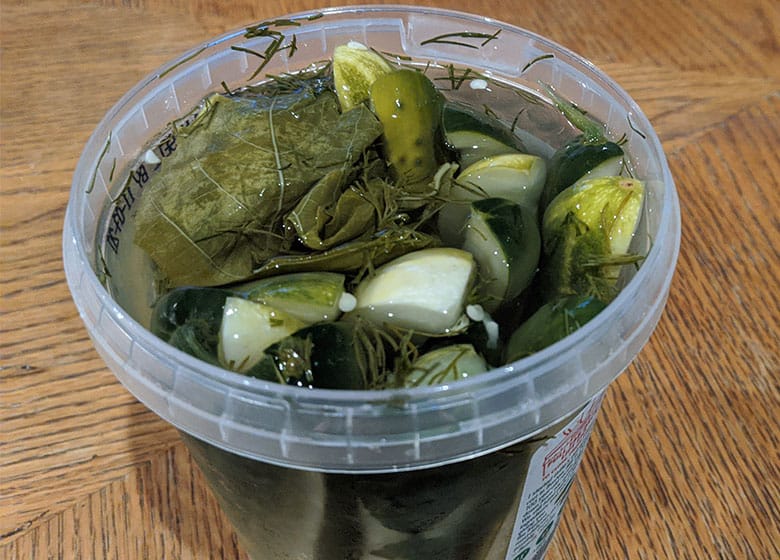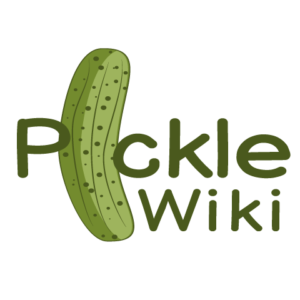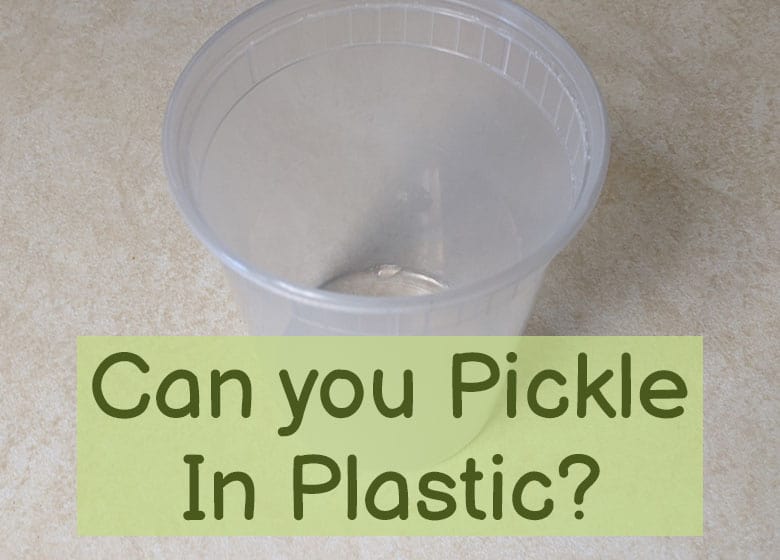Pickling is a method that involves leaving vegetables in an acidic solution to either preserve it or introduce a sour or savory flavor. Traditionally, pickling is done with glass jars, but if you don’t have any available, is using a plastic container a good substitute?
It is possible to pickle foods in a plastic container as long as you use the quick-pickle method because it does not involve boiling that would otherwise melt the plastic. Additionally, plastic does not break down when exposed to the vinegar solution often used in pickling.
That said, there are several safety precautions to take when pickling with plastic to keep you and your family safe from harmful chemicals, materials, and bacteria. In this article, we’ll cover when and how you can use plastic containers for pickling as well as best practices.
When Should I Use a Plastic Container for Pickling?
Whether you decide to use a plastic container for pickling will depend on the type of pickling you plan on doing. There are two methods of pickling: direct and indirect.
Indirect pickling involves allowing produce to ferment on its own without the assistance of added acidic solutions. Plastic containers are not required or recommended for the indirect method of pickling because specific plastics allow certain amounts of heat and air in and out, affecting the fermentation process.
With direct pickling, no fermentation is required—only an acidic solution. Direct pickling consists of the “quick pickle” or canning technique.
- Quick Pickling: Quick-pickling is done by submerging produce in an acidic solution (usually consisting of vinegar), which permeates the vegetable’s skin. The solution preserves the food by killing bacteria while also giving it flavor. Quick-pickling requires refrigeration and does not allow for long term storage.
- Canning: Canning is a pickling process that allows food to be stored for more extended periods at room temperature but requires several boiling steps to kill any bacteria present.
Because plastic is prone to melting under high temperatures, it is recommended that you do not use plastic containers with the canning method. If you want to use a plastic container, only use the quick pickle technique.
Types of Plastic Containers Used for Pickling

Many assume that if you can pickle in a plastic container, then any plastic container will do. However, there are several requirements the vessel must meet to be used for pickling vegetables safely and successfully:
- The container must be sealable. The ideal lid will have threading to prevent bacteria from getting in your food and keep the pickling solution and flavor from getting out.
- The container must be vertical and cylindrical or square-shaped; this allows you just enough space to pack the vegetables so that they’re not exposed to the air inside.
- Make sure the container is food safe. Food-safe plastic containers are designed so that they don’t break down and release particles into your food. This also means the plastic has never contained toxic chemicals.
Tip: Empty, sanitized two-pound plastic nut containers are great for quick pickling! They are just the right size for halves of large or Persian cucumbers.
Safe Pickling Tips for Plastic Containers
Produce naturally has bacteria on it but usually doesn’t pose an issue as long as it’s washed and rinsed thoroughly.
However, Clostridium Botulinum (Botulism) is a concern if food is being stored for long periods. It is possible that if a tiny amount found on the produce remained after the pickling process, it could grow and make you very sick after consumption, regardless of the type of container you use.
When using the quick-pickle method in a plastic container, the pickles are still safe for consumption because other precautions taken to limit bacterial growth:
- The time frame for keeping the produce in the pickling solution is generally shorter.
- The produce is always be stored between 35°F and 40°F (refrigerator temperature).
- The vinegar and salt content are high enough to prevent bacterial growth.
In any case, follow these tips when getting ready to pickle to ensure your food remains bacteria-free:
- Make sure you use at least 5% acidic vinegar when pickling to inhibit bacteria growth.
- It is also recommended to boil your produce first before placing it in your plastic container to kill any lingering bacteria. Simply bring salted water to a boil and blanch the vegetables. The produce can still be warm when packed in the jar.
- Salt the produce. To do this, cover the vegetables directly with pickling salt and any additional desired spices or soak the produce in brine with spices. The length of the salting depends on the type of produce and recipe used.
All these precautions limit bacterial growth for up to six weeks, which is long enough for you to pickle and enjoy the results!
Here are a few other safe pickling tips to keep in mind:
- Thoroughly wash the produce! This includes scrubbing any crevices or wrinkles.
- Remove all blemishes or non-edible bits.
- Use only the freshest product, ideally picked within 24 hours, to prevent blemishes and bacterial growth. Also, fresh produce remains crisper when pickled!
- Sanitize all containers, tools, and equipment before pickling. (Do this by washing with soap and hot water for plastic containers.)
Refrigerator Pickle Recipe for Plastic Containers
This recipe is for pickling cucumbers. The result is a pickle, almost like what you would get from a canned pickle, but with less effort! Keep in mind: they do not last as long as a canned pickle would and cannot be stored longer than six weeks.
As always, please follow the tips mentioned above for safely pickling and preserving food!
Ingredients:
- Cucumbers
- Fresh dill
- 5% acidity vinegar (White or Apple Cider Vinegar works best)
- Distilled water
- Hot pepper (optional)
- Fresh garlic
- Pickling spices (Can include: Mustard Seed, Allspice, Coriander, Red Pepper, Black Pepper, Ginger, Bay Leaves, Cinnamon, Cloves. These can be bought as a mix or separately.)
Tools:
- A plastic jar or another food-safe container for pickling
- Another container for measuring and mixing
- Measuring spoons
Steps:
- Clean the cucumbers.
- Cut cucumbers to be just below the height of the container in length. (When using Persian cucumbers, this step may not be necessary.)
- Slice cucumbers lengthwise into halves or quarters.
- Add the dill to the pickling container.
- Pack the cucumbers into the container tightly. (This helps keep them from floating to the top of the jar later.)
- Mix 1 part vinegar and 3 parts water in the second container.
- Add 1 teaspoon garlic to the water-vinegar mix.
- Add 1 heaping teaspoon of pickle spices to the liquid.
- Add 2 tablespoons salt to the mix.
- Pour the liquid into the pickling container slowly. Be sure there is no trapped air!
- Secure the lid on top and place the container in the fridge.
The pickles should be good to eat in about 1-2 weeks of sitting in the fridge when following this recipe. The longer they sit, the milder the vinegar flavor will become.
Of course, feel free to eat them sooner! Nothing will be wrong with them—they just won’t be developed into the pickle you might be used to.
Conclusion
Pickling is a wonderful way to preserve a summer harvest or create delicious, pickled veggies like the classic pickle. While pickling is traditionally done in a jar, there’s no harm in using a plastic container as long as it’s food-safe, sealable, and is the right size for the produce you’re trying to pickle. Just make sure you’re taking the proper safety precautions!

